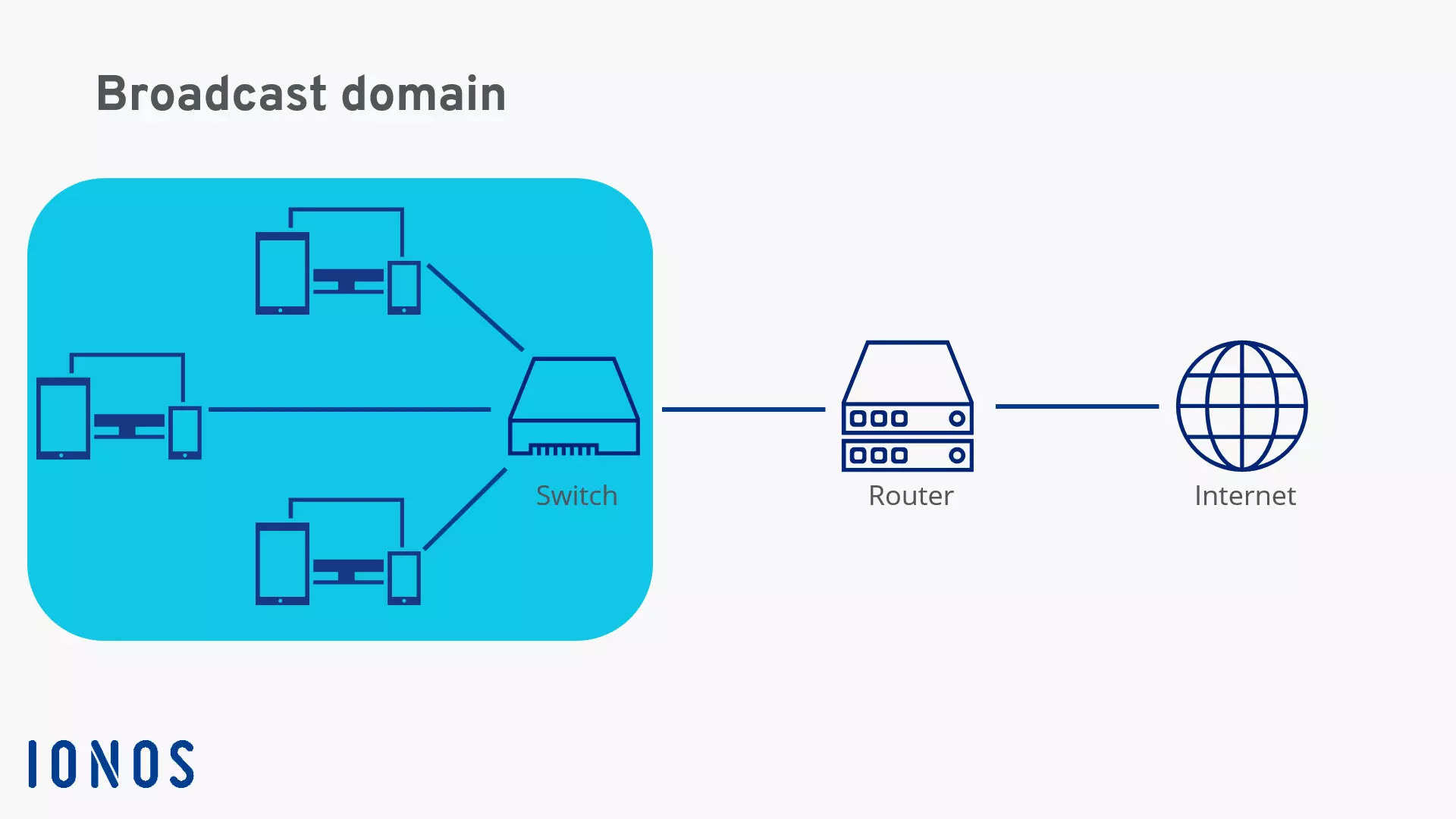What is a broadcast domain?
Network hosts can send broadcast messages to every port in a network. Every device that receives this broadcast is a part of the broadcast domain. But how can you restrict the domain and only send broadcasts to specific devices?
How do broadcast domains work?
The broadcast domain is the network of devices which receive a broadcast. The host device sends a broadcast to the broadcast address and every participant in the domain receives the broadcast. The host does not need to know the other devices’ IP addresses to send a broadcast to the devices in the network.
A broadcast domain can include an entire network or only a selected number of devices in the network. Broadcast domains can also be set up within a local area network (LAN). Every connection within the domain shares the same layer 2 segment. This means that they are connected to each other at the data link layer.
Every node connected through switches and repeaters are usually part of the same broadcast domain. However, the domain ends with a router because the network device operates at the network layer (Layer 3). Therefore, computers that connect to each other over the internet are not part of the same broadcast domain.
VLANs are used to divide a broadcast domain within the same layer 2 segment, allowing the domains to function as if they had been created from different physical networks. Virtual networks make it possible to restrict a broadcast domain without the need for multiple routers.

Why are broadcast domains required?
It is important for every device in a network to be able to reach other devices without having to establish direct connections. This is particularly important when the IP addresses of other nodes are not known. Broadcasts commonly occur with ARP and DHCP, both being instances when network information is requested.
However, these queries should be restricted to a specific area, as they require a lot of time, especially when connecting to the internet. It is also best to avoid flooding the rest of the network with unnecessary communication. To prevent this, the broadcast domain has a clear framework for broadcasting to devices.
Broadcast domain disadvantages
A broadcast is a message, i.e., a small data packet, that is sent to all participants in the domain. This puts stress on the network and the devices in it. Every request must be processed, even if the information is not relevant to the recipient. Since broadcasts are often essential for smooth communication within a network, domains should not be removed. If a broadcast domain is too large, problems may arise.
Home networks should not have a problem if there are a low number of devices. Large networks, such as corporations, government agencies and universities, should be divided into individual domains. This reduces unnecessary traffic and maintains the normal transmission speed. When dividing the domains, it is also important to prevent services such as DHCP from accessing the other domains. This can be remedied with technologies such as DHCP relay, which can communicate beyond the boundaries of a broadcast domain.
What is the difference between a broadcast domain and a collision domain?
Both domain types describe logical subdivisions of a network, however, they address different challenges. The broadcast domain specifies which network participants can be reached by a broadcast. The collision domain, on the other hand, describes the area of a network where data packets can collide. This happens when two network devices send data at the same time within a specific section of the collision domain.
While a broadcast domain can only be interrupted by routers, collision domains are limited by switches. A collision cannot occur between two end devices that are connected with a switch. Instead, the collision occurs between the switch and end device. This is because the two phenomena, broadcast and collision, operate at different layers of the OSI model. While a broadcast is sent on the security layer (layer 2), collisions occur on the physical layer (Layer 1).
| Broadcast domain | Collision domain |
|---|---|
| Logical division of a network | Logical division of a network |
| Refers to all devices that receive a broadcast | Refers to all connections in which collisions occur |
| Limited by routers | Limited by switches |
| Operates on layer 2 | Operates on layer 1 |
Discover other interesting topics on networking in our Digital Guide. The following articles can help you learn about the basics of networking:

